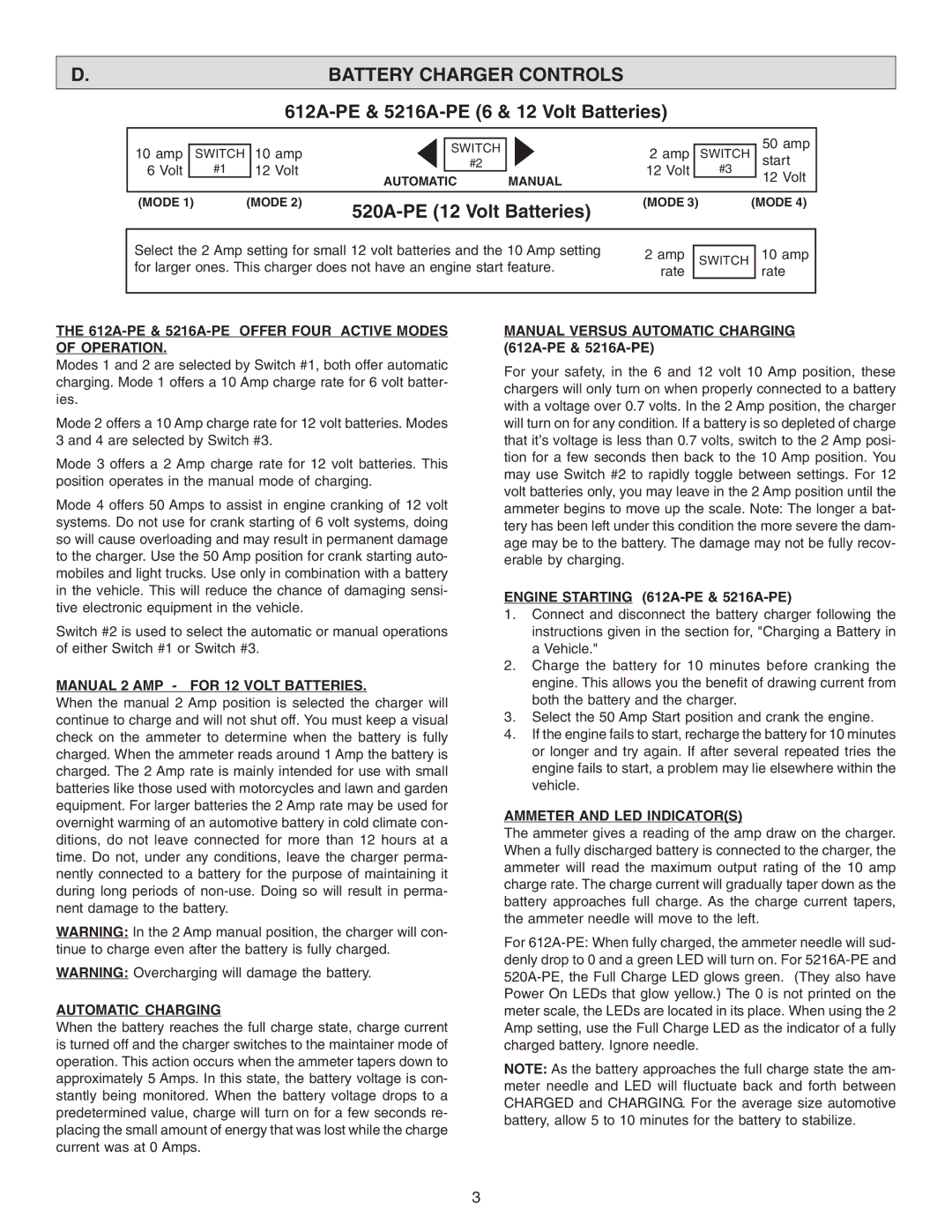5216A-PE, 612A-PE, 520A-PE specifications
The Schumacher 520A-PE, 612A-PE, and 5216A-PE are innovative battery chargers designed to meet the demands of today's users who require efficient, reliable, and versatile charging solutions. Each model offers unique features and technology tailored to different needs, making them suitable for various applications from automotive to recreational vehicles.The Schumacher 520A-PE model is engineered for optimal performance, delivering a powerful 520 Amp peak current. This model is particularly advantageous for users needing a reliable jump start for larger vehicles. It is equipped with advanced microprocessor technology that monitors and adjusts the charging process automatically, ensuring that batteries are charged safely and effectively without overcharging. The unit also features a built-in safety system with reverse polarity protection, ensuring user safety by preventing incorrect connections.
Moving to the Schumacher 612A-PE, this model provides up to 612 Amp peak current, making it ideal for heavy-duty applications. Its robust design is complemented by a user-friendly interface, which includes a digital display that provides real-time charging information. The 612A-PE is equipped with high-efficiency speed charging capabilities, enabling users to get their vehicles back on the road faster. The charger’s versatility allows it to serve various battery types, including AGM and gel, meeting the needs of both traditional and advanced battery technologies.
The Schumacher 5216A-PE offers a balanced combination of power and functionality, reaching a peak current of 216 Amps. It stands out for its lightweight and portable design, making it convenient for everyday users. This model also incorporates a smart charging technology that adjusts the output based on the battery's condition, providing an optimized charge that extends battery life. Its user-friendly interface features LED indicators that display the charging status clearly, allowing users to monitor the process easily.
In summary, the Schumacher 520A-PE, 612A-PE, and 5216A-PE battery chargers exhibit the brand's commitment to innovation and performance. With their advanced features and technologies such as microprocessor control, safety systems, and efficiency-oriented designs, these chargers cater to a wide array of user requirements. Whether for household use or heavy-duty applications, Schumacher's offerings ensure that users can depend on durable, high-performance charging solutions that keep their batteries in peak condition.

